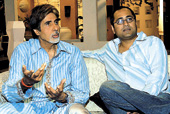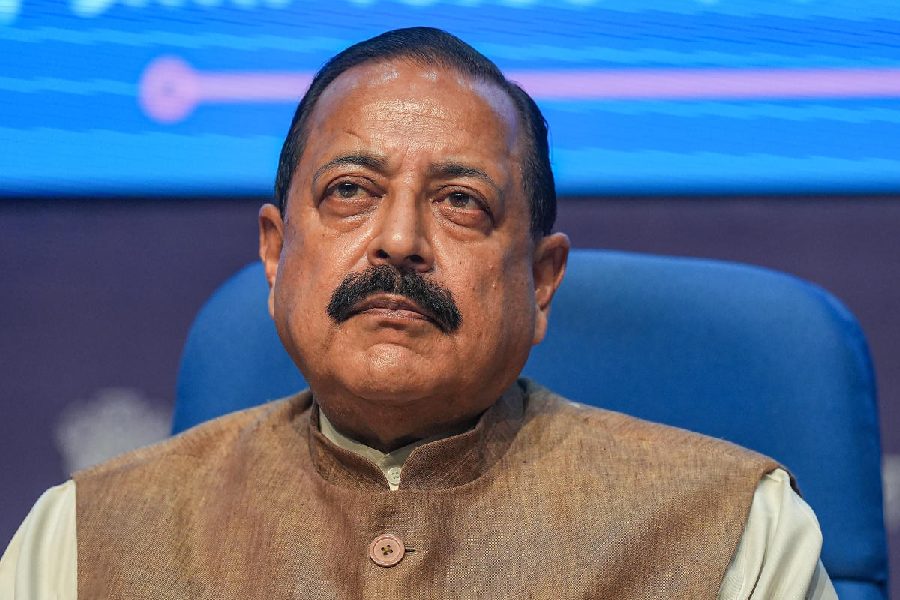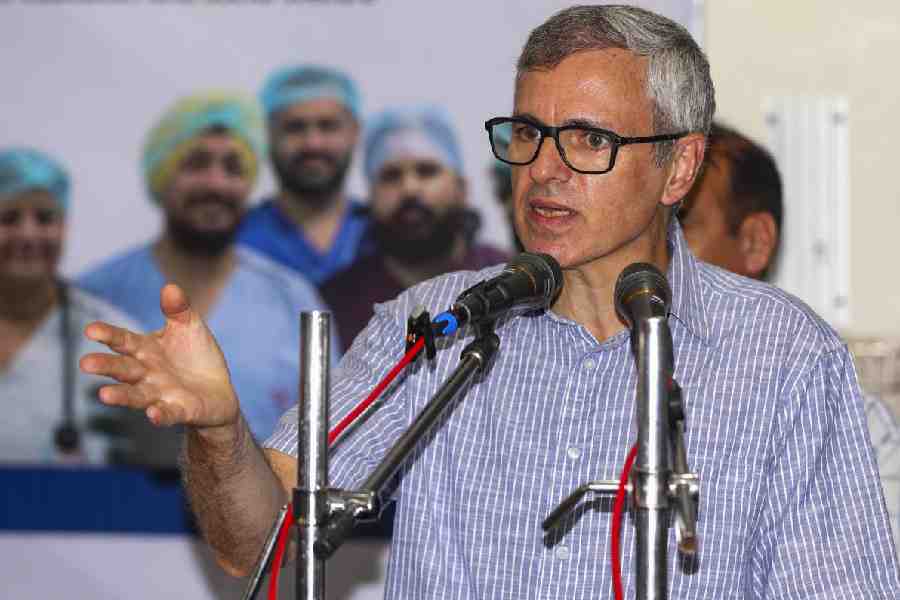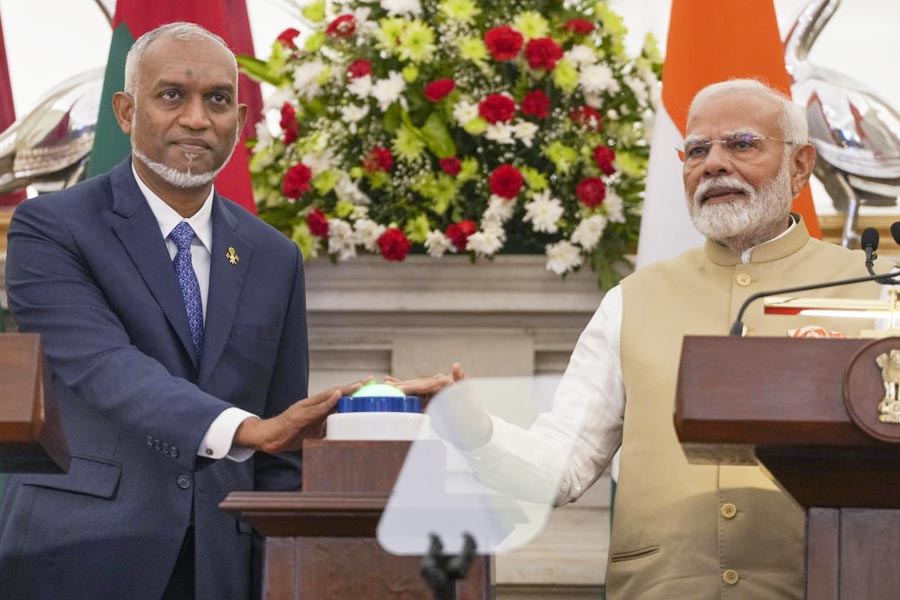


What humans can do, sometimes a puppet can do better. This belief led to the birth of a toy that could entertain as well as educate common people. India is said to be the birthplace of puppetry, 5,000 years back, when ships from Tamralipta port would take puppeteers to countries in Europe. However, today, the art is on its way out as lesser people take interest in watching or doing it.
In West Bengal, the South 24-Parganas is well-known for puppetry. Several groups in the district still practise puppetry and go to events across the state and country to perform. Puppet theatre groups in Howrah have originated from South 24 Parganas. Youths from the west bank of the Hooghly, mainly Shyampur, joined groups in South 24 Parganas and learnt the trade. Later, they returned to their homes and started their own groups.
The rod puppet or dung-er putul is the traditional form of puppet that is common in South 24-Parganas. The same tradition is followed by the groups of Howrah. Satyabrata Das, the director of Ma Jaichandi Opera in Nahabatpur, Shyampur, has been doing puppet shows for more than 35 years. Das has worked with a group in South 24 Parganas in his youth and later decided to start his own group in Shyampur. “I had heard that there were some puppetry groups in Howrah many years ago, but those had become obsolete. I had learnt to make puppets from South 24-Parganas and I could easily establish my group here,” said the director.

Das’s rod puppets are carved out from wood. “Everything from the body, hands and head are made from wood. The rod which is turned to make the puppet move is a bamboo pole. A string inside the body is used to operate the hands,” said Das. The arms are joined at the elbow so that they can be bent when required. The one who operated the puppets must stand and carry the doll on one arm and operate it with another hand.
Puppets are a useful means for spreading awareness among common people. The state government often uses these groups for such purposes. Till a couple of years ago, Satyabrata was also associated with the state government programmes. “Various government awareness programmes were done using puppets like Directly Observed Treatment Short (DOTS) Course for TB control, tobacco, AIDS and other issues. I do not do these any more, but I get a lot of call shows for my group,” said Das. His group will be going for a 10-day tour to Jhikira during Rath Jatra where they will be doing shows at the mela.

Apart from Das’s group, there are another three, Naskarpur Bishalakshmi Theatrical Putul Nach Party, Manasa Mata Theatrical Putul Nach Party, and Krishna Kali Opera. Subrata Bera, who runs Krishna Kali Opera, had initially joined hands with Satyabrata Das when Ma Jaichandi Opera was formed. He had been a co-artiste with Das in South 24-Parganas and also learnt the art. Later, because of differences with Das, Subrata left and and started his own group, Krishna Kali Opera.
Bera is involved in many government-awareness campaigns where he does puppet shows in villages and schools. “We do shows on women’s education, Kanyasree scheme, pulse polio and other things. I write short skits on these subjects,” said Bera. Call shows also come his way from time to time, specially for melas or other big events. “We usually do mythological plays or social plays. I choose from various scripts and see which ones are suitable for puppetry,” Bera said.

The average earning from a show is around Rs 4,500. “We don’t do this for a living so what we get is just enough to distribute among the team members and cover the travelling cost,” said Bera. When he is not doing puppetry, Bera runs a TV and radio repair shop in Shyampur. Like Das, Bera’s puppets are also made of wood, but the face has a layer of clay on it before it is painted. “We do this to prevent the face from getting damaged,” Bera said.
A puppet show team comprises at least 14 members. Das is also editor of a magazine, Bhorer Alo, where many good writers from the villages contribute. Das also has farmland from where he reaps paddy, a cow that gives milk and fish from his pond. This is enough for the family. However, the money that comes from the shows is just enough to distribute among team members. “It is difficult to sustain one’s household and all other expenses from the money that we get. The amount is too low. Shows have also reduced with time. At one time, we did close to 80 shows in a month. Now the number is less than half,” said Das. The members of both Bera and Das’s teams are either day labourers or farmers, who join when they have to do a show. Basumati Das, a music and recitation teacher in the village, is the singer of Ma Jaichandi Opera. Bera sings for his own team.
While these groups are working from the villages, another group has started at Salap. Anil Sardar, a ventriloquist, has started a puppetry group, Kajal Puppet Theatre. “I wanted to try something different and that is why I tried making puppets myself. However, they were amateurish and not attractive enough,” said Anil. He approached Subho Joardar, theatre personality who has done extensive research on puppetry, to guide them. Joardar finds it interesting as well as heart-warming to find a group of youngsters in Salap taking an interest in puppets. He trained the members of the group at a workshop in Salap and taught them the art of making puppets and manipulating them.


“They had made some puppets on their own, but since they lack knowledge, they could not make them properly. Rod puppets are the oldest form of puppets. These kind of puppets are still used by groups in South 24 Parganas,” said Joardar. “There are very few families in the villages of Bengal who are still working with this art form. Putul nach or puppet dance is seen at village melas and programmes. Other than the rod puppet, there are string puppets that are manipulated using strings and the other is the glove puppet that is worn on the hands,” added Joardar.
At the workshop, Joardar taught the members how to make innovative puppets from materials like foam, cloth and thermocol. Joardar feels that using such materials helps to keep the puppet light. “The head of the puppet is carved out of thermocol after which paper is pasted on it. The body is made of foam after which it is dressed up according to the character. The head of the puppet is attached with the body using a PVC pipe. A nut inside keeps it in place.
The puppeteer puts his arm inside the puppet’s body and manipulates the rod to make the head move. Two more thin rods are inserted from outside into the hands. The puppeteer must manipulate the head as well as the two hands to make it look lively,” said Joardar. People like Das, however, still believe in making the old rod puppets from wood. “We carve the puppets out of wood. That makes them strong. Since we have to use the same puppets for different plays. We have to nail the costumes on the body according to the roles. That is why wooden dolls are better,” said Satyabrata.
Joardar is heartened to see the interest in puppetry. “Indologists say that India is the birthplace of puppetry. But people have forgotten this art that will soon be lost,” he said.











